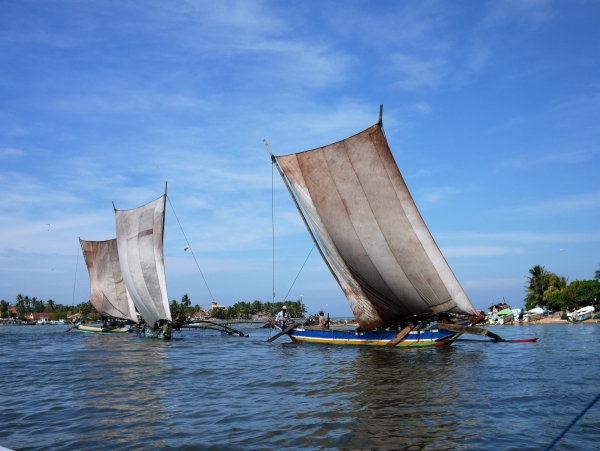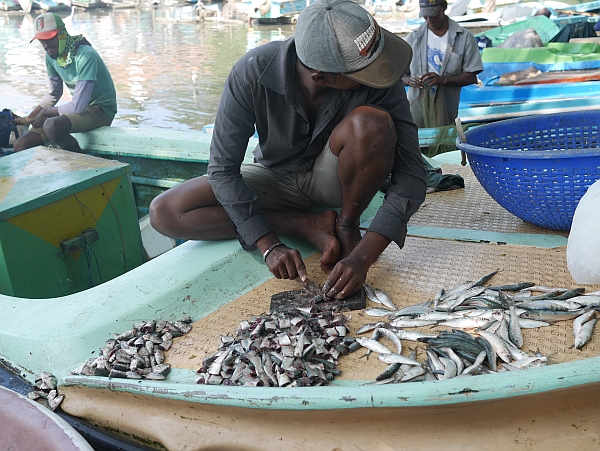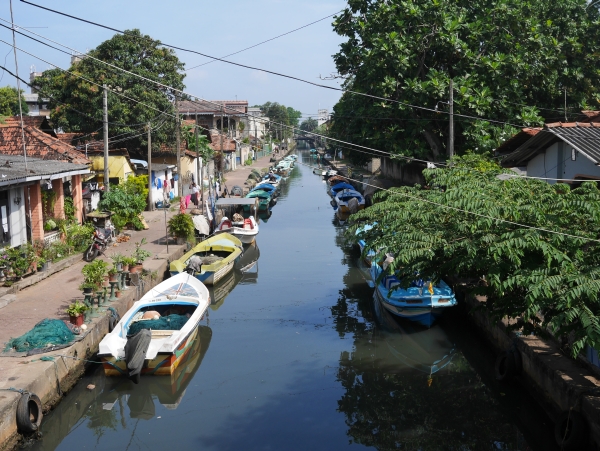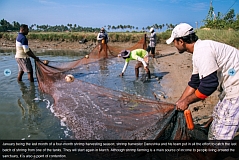Fishing for the future? Conserving our wetlands in an urbanizing world.
Today (02nd February 2016) is World Wetlands Day and this year’s theme is Sustainable Livelihoods.
Spanning 3,000 hectares, the Negombo lagoon was in the past a thriving wetland supporting a diversity of plants, fish, and wildlife.
But today, it is in decline, with many fishers noting significant decreases in their catch. Despite—or, perhaps, in consequence of—Negombo lagoon’s wealth of resources, it now finds itself needing to balance the multiple pressures of development, conservation, and unstructured urbanization. The very aspects that make Negombo a valuable resource—its ecology, fishing, and location—also threaten its delicate ecosystem and communities that depend on the lagoon for their livelihoods.

Photo: Valerie Tan
With the guidance of the International Water Management Institute (IWMI) and The International Union for Conservation of Nature (IUCN), students from the Paul H. Nitze School of Advanced International Studies of Johns Hopkins University (SAIS JHU) looked into the present condition of various fishery livelihoods in the lagoon and underlying causes. With over 140 reported fish species and twenty prawn species, the lagoon has been especially important for a range of fishers from poor small-scale to large mechanized operations.
Fishing is an indispensable part of the lagoon. However, rapid development, while good for the community with its increased incomes for local residents, improved infrastructure, tourism boom, and opportunities for large-scale manufacturing, may not bode well for the lagoon’s future. In the long-run, it could degrade the environment and deplete resources that are increasingly non-renewable, to the detriment of the surrounding communities. “All of these factors in combination put immense pressure on the lagoon to provide enough for everyone,” say the students at SAIS JHU.

Photo: Valerie Tan
What can be done about the tensions in Negombo lagoon’s preservation, its role as an important resource for sustaining livelihoods, and the need for economic development? With multiple un-coordinated fishing activities; chemical and physical pollution from industries and residents near to and upstream of the lagoon, and encroachment for housing that shrinks the lagoon and destroys mangroves critical for fish spawning, the students found that a key problem was the fragmentation of responsibilities for managing these activities amongst a range of government agencies. Without effective coordination among often under-resourced government agencies and local fishers no proper lagoon management and rule enforcement mechanism has emerged. They suggest that since the lagoon is seen as a common resource with many uses for different communities, a proper management strategy needs to be put in place. It must be inclusive of all stakeholders and given the proper resources for enforcement of rules.
“It is ironic that although the communities were able to-organize to protect the lagoon and their livelihoods from government plans to use the lagoon as a sea-plane landing site some years ago these same fisher groups are not organized to ensure they collectively use the lagoon sustainably,” say the students. What’s more, the likelihood of such a commitment arising appears to be dwindling, as major declines in fish and prawn catches over the years has meant younger generations see greater possibilities in urban employment. Since this lagoon has the highest levels of urbanization of any lagoon in Sri Lanka, and given that all Sri Lanka’s lagoons are shallow systems especially vulnerable to human pressures, lessons from Negombo lagoon can provide fore-warnings of the need to value the services of these highly productive wetlands, and integrate their management with future human development to avoid the uncertain future faced by Negombo lagoon.

Photo: Valerie Tan
According to Sanjiv de Silva, a researcher at IWMI, “from a global perspective, the situation of Negombo lagoon highlights how the relationships between people and wetlands can change with the advent of urbanization. With new livelihood opportunities, conventional arguments for sustaining wetlands based mainly on direct economic use values may be undermined. In such situations, the need to convey the full range of wetland values to policy and decision makers becomes all the more urgent”. These values include many key ecological services such as protection against coastal flooding, regulating micro-climates and recharging groundwater tables, which are not always visible, but can have large positive economic and social impacts.
The future of the Negombo lagoon remains murky, but for the livelihoods of many people the importance of these wetlands still remains. With places like Negombo lagoon in mind, World Wetlands Day 2016 encourages us to think about the challenges in preserving wetlands for our future and their vital contribution to people’s livelihoods.
This article is based on fieldwork conducted by the SAIS JHU students: Mr. Riad Houry, Ms. Rei Anno, Ms. Erina Iwami and Ms. Valerie Tan. The generous cooperation of Mr. Damith Chandrasekara, National Coordinator MFF Programme IUCN Sri Lanka, and Dr. Jayampathy Samarakoon, consultant coastal ecologist are greatly appreciated.
Find out more:
Silva, E.I.L.; Katupotha, J.; Amarasinghe, O.; Manthrithilake, H.; Ariyaratne, R. 2013. Lagoons of Sri Lanka: From the origins to the present. Colombo, Sri Lanka: International Water Management Institute (IWMI). 116p.


